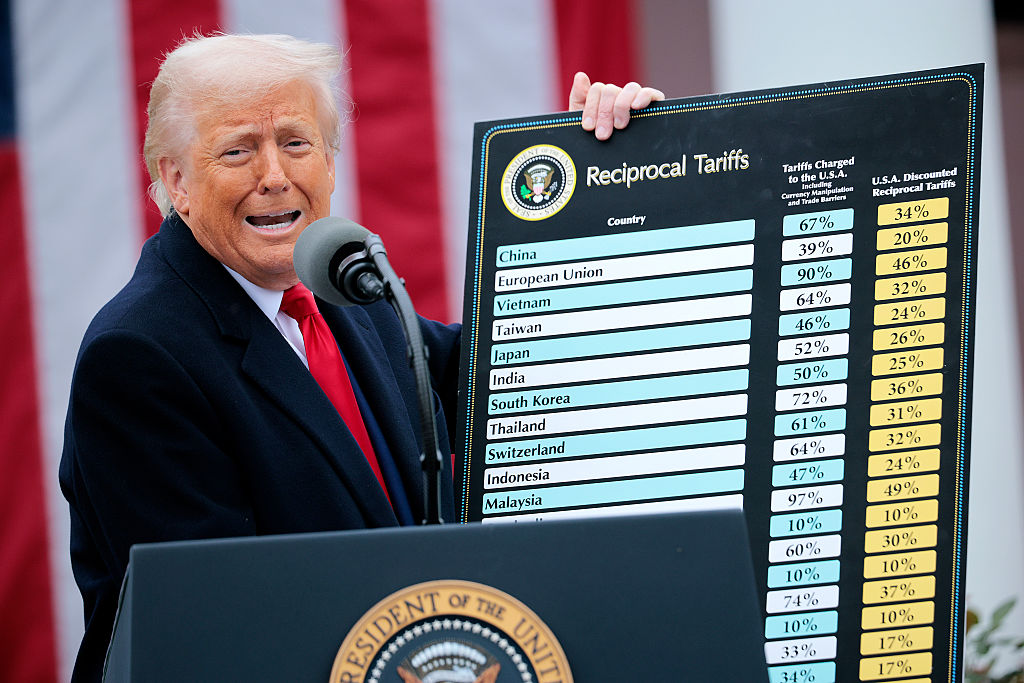The long wait for Vice President Kamala Harris’s policy platform is over… well, at least on the economic front. Harris released her economic plan on Friday after weeks of running at the top of the ticket for the Democratic Party. The rollout, however, was less than stellar, as Harris proposed a mix of Soviet-style price controls with more popular policies pilfered from former president Donald Trump’s speeches and policy platforms.
Harris said in the past week that she would end taxes on tips for service workers, which Trump promised back in June to do. The plan also runs counter to policies the Biden-Harris administration implemented that empowered the IRS to go after serviceworkers’ tips. Today, reports said Harris also intended to increase the child tax credit to $6,000. Trump’s running mate J.D. Vance recently suggested increasing the child tax credit from $2,000 to $5,000, which critics at the time framed as Vance “punishing” people without children. Curiously, the same criticisms have not been lobbied at Harris, who simply snagged Vance’s idea and plopped an extra $1,000 on top.
In addition to these cribbed plans, Harris promised to ban “price gouging” on groceries. Most economists agree that inflation is not caused by companies raising prices, but rather that inflation drives price hikes. Instead, supply chain issues coupled with a rise in demand have forced grocery stores to raise prices in order to stay profitable. Grocery stores already have some of the slimmest profit margins of any industry; according to reporting from the Washington Post, “Despite Harris’s (and Warren’s) accusations about ‘excessive corporate profits,’ those margins remained relatively meager even when prices surged. The grocery industry’s net profit margins peaked at 3 percent in 2020, falling to 1.6 percent last year.” Countries that have implemented price caps on groceries have notoriously seen food shortages, black markets, rationing, hoarding and even famine.
Harris is also in favor of giving first-time homebuyers a $25,000 down payment for a home, which surely won’t immediately increase the price of every home by $25,000 or, à la the 2008 subprime mortgage crisis, put people in homes that they can’t really afford. Harris promises to increase home supply at the same time with an unspecified amount of taxpayer money to build 3 million new houses. Anyone who has seen the results of the $40 billion earmarked to connect rural Americans to the internet or the $7 billion to outfit the country with electric vehicle chargers would be skeptical of such an ambitious plan.
As Catherine Rampell writes in the Washington Post, Harris’s …ambitious… economic policies are unlikely to win her many favors with the moderate middle. “When your opponent calls you ‘communist,’ maybe don’t propose price controls?” she offers.
-Amber Duke
On our radar
TRANSITION TEAM TAPPED Former president Donald Trump announced the members of his presidential transition team should he win the 2024 election on Friday. The committee will be chaired by former small business administrator Linda McMahon and Howard Lutnick, chairman of financial services firm Cantor Fitzgerald.
WALZING INTO CHINA The House Oversight Committee is launching an investigation into Minnesota governor Tim Walz’s field trips to China to see if he had any inappropriate contacts with Communist Party officials. Walz took approximately thirty trips to China, including through an educational business he started with his wife.
STOP THE SASSE Florida governor Ron DeSantis is asking the University of Florida to look into a series of expenses made by former UF president and senator Ben Sasse after a student newspaper report revealed he more than tripled spending at the school. Sasse responded on X that he is “happy to defend each and every one of these [new] initiatives.”
Tim Walz scrubs nursing home policy
Under Governor Tim Walz’s watch during the Covid-19 pandemic, Minnesota experienced a devastating impact to its most vulnerable population. A shocking 80 percent of Covid-related deaths in the state occurred among residents of long-term care facilities, including nursing homes and assisted living centers, Fox News reports.
This is mostly due to a policy Walz has been criticized for, which allowed hospitals to discharge patients recovering from Covid-19 back into nursing homes. The policy has now been removed from the Minnesota public-facing website.
“Patients with confirmed or suspected Covid-19 who still require transmission-based precautions for Covid-19 can be transferred to congregate living facilities,” the policy said, according to archives from the Wayback Machine.“It is the recommendation of MDH that patients with suspected or confirmed COVID-19 can be discharged when clinically indicated and neither discontinuation of transmission-based precautions nor the establishment of two negative Covid-19 tests is required prior to hospital discharge.”
In May of 2020, there were 932 deaths from the pandemic in Minnesota, including 759 among residents of nursing homes or assisted living facilities, making up 81 percent of all deaths and the highest percentage in the nation. Walz still doubled down on the policy decision.
“This was what everyone was doing. This was not a mistake. It wasn’t like no one thought about this. There was complexity in how you deal with this,” he said at the time.
His administration also discouraged families from taking their loved ones out of nursing homes and bringing them home, and many complained they were not notified about Covid-positive tests in nursing homes and were unable to say their goodbyes.
During the pandemic, Walz pushed other extremely strict policies, defending a hotline Minnesota put in place for people to snitch on their neighbors or anyone who failed to follow social distancing rules.
–Elisenne Stoller
Is this Ohio congresswoman the worst boss on the Hill?
A new contender has entered the arena to contest the title of worst boss in Congress: Congresswoman Emilia Sykes, a freshman, who has lost almost all senior staff in the few short months she’s been in office.
A review of her staff on Legistorm shows that she’s already churned through a chief of staff who lasted ten months, a deputy chief of staff who lasted nine months, a constituent advocate who lasted one month, a legislative director who lasted eleven months, a field representative who lasted five months, an executive scheduler who lasted three months and an operations director who lasted a year, among others.
While the circumstances of office departures vary, Sykes is already earning notoriety from the nonpartisan site Legistorm for the sky-high turnover her office has seen. On the website’s “Horrible Bosses” page, she clocks in at number nine for the highest turnover in the House from 2001-2023, with a rate that’s well more than double that of the average House office. As goes Ohio…
Fortunately for Sykes, at least she’s not Republican congresswoman Victoria Spartz, who easily leads the list. Spartz was recently charged with bringing a firearm to Dulles Airport.
–Cockburn


























Leave a Reply